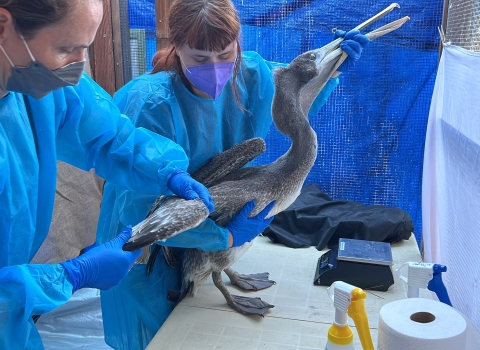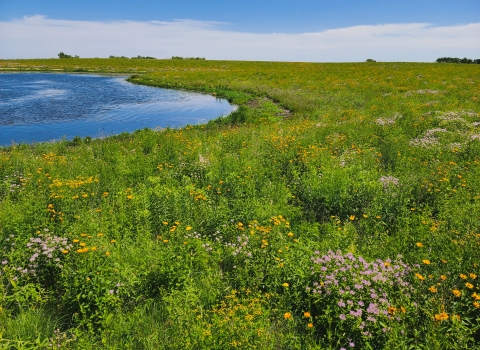Given the nature of the primary threats facing the species and the potential harm of publishing its hibernation locations, the U.S. Fish and Wildlife Service has determined that designating critical habitat for the northern long-eared bat under the Endangered Species Act (ESA) is not prudent. The Service’s determination does not affect the bat’s threatened status, which it received in 2015 due to white-nose syndrome, a deadly fungal disease impacting cave-dwelling bats.
Critical habitat is a designation under the ESA for lands that contain habitat features that are essential for the survival and recovery of a listed species, which may require special management considerations or protections. The ESA requires the Service to consider which areas are needed for a species’ recovery and to designate critical habitat accordingly, unless it determines that doing so is not prudent for the species.
In making its determination, the Service conducted an in-depth analysis of the bat’s seasonal habitat needs, which include mines and caves for hibernation in winter and forested areas for roosting and raising young in summer. Because designating critical habitat requires identification of specific tracts of land, the Service determined it is not prudent to designate hibernation sites as critical habitat. Doing so would increase the risk of vandalism and disturbance to bats at hibernation sites and could hasten the spread of white-nose syndrome.
For the bat’s summer habitat, the Service determined that designating critical habitat would not benefit the species. Northern long-eared bats use a wide variety of forested areas in summer to find food and raise their young and are highly flexible in how they meet these needs. As such, there are no specific physical habitat features essential to its conservation. In addition, the bat’s summer habitat is not limited or in short supply, habitat loss is not a predominant threat, and there are no areas that meet the definition of critical habitat.
“While critical habitat has a fundamental role to play in recovering many of our nation’s most imperiled species, in the case of the northern long-eared bat, whose habitat is not a limiting factor in its survival, designating it could do more harm than good,” said Tom Melius, the Service’s Midwest Regional Director. “Today’s finding will ensure we don’t put the bat at greater risk by drawing people to its hibernation sites. It also enables the Service and our partners to focus our efforts where they clearly can do the most good, finding a solution to the primary threat of white-nose syndrome."
In the United States, the northern long-eared bat is found from Maine to North Carolina on the Atlantic Coast, westward to eastern Oklahoma and north through the Dakotas, reaching into eastern Montana and Wyoming. The species is also found in Canadian provinces from the Atlantic Ocean west to the southern Yukon Territory and eastern British Columbia. Bats are critical to the nation’s ecology and provide billions of dollars in economic benefit to farmers and foresters through the consumption of tons of insects nightly.
Since its discovery in New York State in the winter of 2006-2007, white-nose syndrome or the causative fungus (Pseudogymnoascus destructans) has spread to 32 states and five Canadian provinces, killing more than 5.7 million cave- or mine-hibernating bats.
The Service’s determination can be found in the April 27, 2016, Federal Register.
The ESA is an essential tool for conserving the nation’s most at-risk wildlife, as well as the land and water on which they depend for habitat. The ESA has saved more than 99 percent of the species listed from the brink of extinction and has served as the critical safety net for wildlife that Congress intended when it passed the law 40 years ago. The Obama Administration has delisted more species due to recovery than any other administration: those species include the Oregon chub, Virginia northern flying squirrel and brown pelican.
Connect with our Facebook page at http://www.facebook.com/USFWSMountainPrairie, follow our tweets at http://twitter.com/USFWSMtnPrairie, watch our YouTube Channel at http://www.youtube.com/usfws and download photos from our Flickr page at http://www.flickr.com/photos/usfwsmtnprairie/.


